| Listing 1 - 10 of 27 | << page >> |
Sort by
|
Book
ISSN: 05849888 ISBN: 8670253151 Year: 2001 Publisher: Beograd Vizantološki institut Srpske akademije nauka i umetnosti
Abstract | Keywords | Export | Availability | Bookmark
 Loading...
Loading...Choose an application
- Reference Manager
- EndNote
- RefWorks (Direct export to RefWorks)
En serbe; trad. du titre: The rise of Byzantine military aristocracy in the 11th century
Aristocracy (Social class) --- Elite (Social sciences) --- History --- Byzantine Empire

ISBN: 2912025079 Year: 2001 Publisher: Toulouse : CNRS : Université de Toulouse-Le Mirail,
Abstract | Keywords | Export | Availability | Bookmark
 Loading...
Loading...Choose an application
- Reference Manager
- EndNote
- RefWorks (Direct export to RefWorks)
Aristocracy (Social class) --- Feudalism --- Social history --- Aristocratie --- Féodalité --- Histoire sociale --- Genealogy --- Généalogie
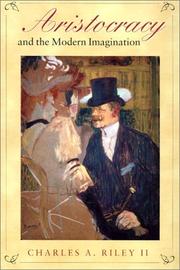
ISBN: 1584651512 Year: 2001 Publisher: Hanover University press of New England
Abstract | Keywords | Export | Availability | Bookmark
 Loading...
Loading...Choose an application
- Reference Manager
- EndNote
- RefWorks (Direct export to RefWorks)
Aristocracy (Social class) --- Artists --- Arts, European --- Arts, European --- Modernism (Art) --- Psychology
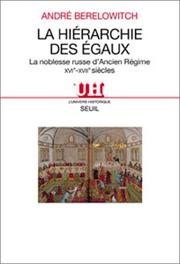
ISBN: 2020300060 Year: 2001 Volume: *57 Publisher: Paris : Editions du Seuil,
Abstract | Keywords | Export | Availability | Bookmark
 Loading...
Loading...Choose an application
- Reference Manager
- EndNote
- RefWorks (Direct export to RefWorks)
À la fin du XVIIe siècle, au seuil de la "modernisation" voulue par Pierre le Grand, la société russe nous semble bien énigmatique. pour tenter de la comprendre, il ne faut ni tomber dans le piège des ressemblances avec les sociétés occidentales, ni succomber à la maladie bien historienne du classement. André Berelowitch évite ces deux écueils de façon magistrale en donnant à l'historiographie française de la Russie une de ses plus belles études. Rompant avec les stéréotypes (influence asiatique, "féodalisme", etc.), analysant au plus près les pratiques, les rituels, l'imaginaire de la noblesse russe, éclairant l'apparente irrationalité des incessantes querelles de préséance qui agitent le monde de la cour, André Berelowitch parvient à faire entrer peu à peu le lecteur dans un univers original, cosmos humain qui se veut reflet du divin. Le sacré est au cœur de la combinatoire des places, attribuées selon des règles à la fois savantes et mobiles. L'honneur, la fidélité, le service des armes n'y ont pas moins de valeur que l'âge, la fonction ou l'ancienneté du clan. Société hiérarchique, qui pourrait bien être restée intacte jusqu'à nos jours, en dépit des vicissitudes d'une histoire tumultueuse.
Nobility --- Noblesse --- History --- Histoire --- Russia --- Russie --- Court and courtiers --- Cour et courtisans --- -Noble class --- Noble families --- Nobles (Social class) --- Peerage --- Upper class --- Aristocracy (Social class) --- Titles of honor and nobility --- #A0103H --- History. --- -History --- Stratification sociale --- Statut social --- Conditions sociales
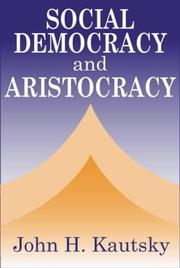
ISBN: 0765800918 Year: 2001 Publisher: Somerset : Transaction Publishers,
Abstract | Keywords | Export | Availability | Bookmark
 Loading...
Loading...Choose an application
- Reference Manager
- EndNote
- RefWorks (Direct export to RefWorks)
Socialism --- Labor movement --- Aristocracy (Social class) --- Socialisme --- Mouvements ouvriers --- Aristocratie (Classe sociale) --- History --- History --- History --- Histoire --- Histoire --- Histoire
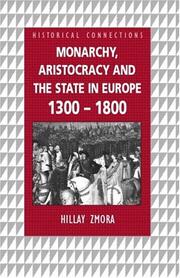
ISBN: 0203190246 1134747993 1280402059 0203184637 9780203190241 9780203184639 9780415150446 0415150442 9780415241076 0415241073 0203184874 9780203184875 0415750442 9781134747948 9781134747986 9781134747993 1134747985 Year: 2001 Publisher: London : Routledge /,
Abstract | Keywords | Export | Availability | Bookmark
 Loading...
Loading...Choose an application
- Reference Manager
- EndNote
- RefWorks (Direct export to RefWorks)
This important new book takes a fascinating thematic approach, providing a useful survey of the position and role of the nobility in the government of states in early modern Europe.
Monarchy --- Aristocracy (Social class) --- Aristocracy --- Aristocrats --- Upper class --- Nobility --- Kingdom (Monarchy) --- Executive power --- Political science --- Royalists --- History. --- Europe --- Politics and government. --- Politics --- History --- #A0301H
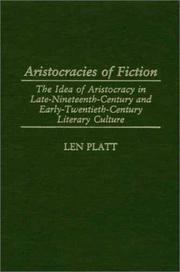
ISBN: 0313316732 Year: 2001 Publisher: Portsmouth Greenwood
Abstract | Keywords | Export | Availability | Bookmark
 Loading...
Loading...Choose an application
- Reference Manager
- EndNote
- RefWorks (Direct export to RefWorks)
Aristocracy (Social class) in literature --- English literature --- English literature --- Literature and society --- Literature and society --- History and criticism --- History and criticism --- History --- History
Book
ISBN: 2840502003 8882292185 Year: 2001 Volume: 102 Publisher: Fasano Schena
Abstract | Keywords | Export | Availability | Bookmark
 Loading...
Loading...Choose an application
- Reference Manager
- EndNote
- RefWorks (Direct export to RefWorks)
Fiction --- French literature --- Lesage, Alain-René --- anno 1600-1699 --- anno 1700-1799 --- Aristocracy (Social class) in literature. --- Aristocratie (Classe sociale) dans la littérature --- Le Sage, Alain René, --- Aristocracy (Social class) in literature --- Aristocracy in literature --- Le Sage, Alain Rene --- Le Sage --- Le Sage, Alain-René --- Aristocratie (Classe sociale) dans la littérature --- Le Sage, Alain René,
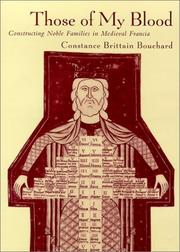
ISBN: 0812235908 9780812235906 9786613211484 1283211483 081220140X 0585436193 Year: 2001 Publisher: Philadelphia : ©2001 University of Pennsylvania Press,
Abstract | Keywords | Export | Availability | Bookmark
 Loading...
Loading...Choose an application
- Reference Manager
- EndNote
- RefWorks (Direct export to RefWorks)
For those who ruled medieval society, the family was the crucial social unit, made up of those from whom property and authority were inherited and those to whom it passed. One's kin could be one's closest political and military allies or one's fiercest enemies. While the general term used to describe family members was consanguinei mei, "those of my blood," not all of those relations-parents, siblings, children, distant cousins, maternal relatives, paternal ancestors, and so on-counted as true family in any given time, place, or circumstance. In the early and high Middle Ages, the "family" was a very different group than it is in modern society, and the ways in which medieval men and women conceptualized and structured the family unit changed markedly over time. Focusing on the Frankish realm between the eighth and twelfth centuries, Constance Brittain Bouchard outlines the operative definitions of "family" in this period when there existed various and flexible ways by which individuals were or were not incorporated into the family group. Even in medieval patriarchal society, women of the aristocracy, who were considered outsiders by their husbands and their husbands' siblings and elders, were never completely marginalized and paradoxically represented the very essence of "family" to their male children. Bouchard also engages in the ongoing scholarly debate about the nobility around the year 1000, arguing that there was no clear point of transition from amorphous family units to agnatically structured kindred. Instead, she points out that great noble families always privileged the male line of descent, even if most did not establish father-son inheritance until the eleventh or twelfth century. Those of My Blood clarifies the complex meanings of medieval family structure and family consciousness and shows the many ways in which negotiations of power within the noble family can help explain early medieval politics.
Nobility --- Knights and knighthood --- History --- 929.7 --- Adel. Eretitels --- 929.7 Adel. Eretitels --- Knighthood --- Civilization, Medieval --- Chivalry --- Heraldry --- Orders of knighthood and chivalry --- Noble class --- Noble families --- Nobles (Social class) --- Peerage --- Upper class --- Aristocracy (Social class) --- Titles of honor and nobility --- Nobility - France - History - To 1500. --- Nobility - France - Genealogy. --- Knights and knighthood - France - History - To 1500. --- History. --- Medieval and Renaissance Studies.
Book
ISBN: 3805327889 9783805327886 Year: 2001 Volume: 2 Publisher: Mainz Zabern
Abstract | Keywords | Export | Availability | Bookmark
 Loading...
Loading...Choose an application
- Reference Manager
- EndNote
- RefWorks (Direct export to RefWorks)
Altars --- Church decoration and ornament --- Nobility --- Aristocracy (Social class) --- Goldwork, Medieval --- Art patronage --- Cleveland Museum of Art --- Altars - Germany - Saxony --- Church decoration and ornament - Germany - Saxony --- Nobility - Germany - Saxony - Art patronage --- Aristocracy (Social class) - Germany - Saxony - Art patronage --- Goldwork, Medieval - Germany - Saxony
| Listing 1 - 10 of 27 | << page >> |
Sort by
|

 Search
Search Feedback
Feedback About UniCat
About UniCat  Help
Help News
News